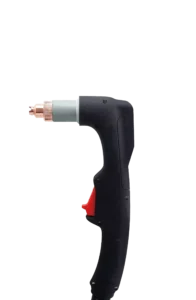If you are planning to work with a plasma torch, it is essential to understand how to use it safely and effectively. A plasma torch is a powerful tool that can cut through various materials, including metal, with precision and speed. However, it can also be potentially dangerous if mishandled. In this article, we will guide you through the proper usage of a plasma torch, ensuring your safety while maximizing its effectiveness.
To begin, let’s explore the various components of a plasma torch. Typically, a plasma torch consists of a power supply, a torch body, and a nozzle. The power supply provides the required energy to create the plasma arc, while the torch body houses the necessary controls and connections. Finally, the nozzle focuses the plasma arc, enabling precise cutting. Familiarize yourself with these components before operating the plasma torch to ensure a clear understanding of their functions.
Before using a plasma torch, ensure that you are wearing appropriate safety gear. This includes a welding helmet with a darkened visor to protect your eyes from the intense light emitted during the cutting process. Additionally, wear flame-resistant clothing, gloves, and safety boots to shield yourself from any potential sparks or molten materials. Safety should always be the top priority when using a plasma torch.
To use the plasma torch effectively, it is crucial to select the correct settings for the materials you intend to cut. Different materials require different amperage and gas flow settings. Consult the manufacturer’s guidelines or reference charts to determine the appropriate settings for the specific material you are working with. Adhering to these guidelines ensures clean and efficient cuts.
Moreover, maintaining an appropriate cutting distance is vital for both safety and effectiveness. A distance of around 1/8 inch between the nozzle and the material is ideal for most applications. However, this may vary depending on the thickness and type of material. A greater distance could result in a weak and erratic arc, while a shorter distance may damage the torch or material. Practice on scrap pieces to determine the optimal cutting distance for your specific needs.
One of the key benefits of using a plasma torch is its versatility. Not only can it cut through various materials, but it can also be used for gouging, piercing, and beveling. When purchasing a plasma torch, ensure that it is equipped with the necessary attachments for these applications. For example, a gouging attachment allows for the removal of excess material and rough shaping, while a piercing attachment enables easy hole creation.
The application areas where a plasma torch shines are diverse. In metal fabrication, it is widely used for cutting intricate shapes and designs. HVAC professionals utilize plasma torches for ductwork fabrication and repair. Additionally, artists and sculptors employ plasma torches to create unique metal artworks. With its precision and versatility, the plasma torch finds applications across industries.
In conclusion, using a plasma torch safely and effectively requires attention to detail and adherence to safety standards. Familiarize yourself with the components of the torch, wear the necessary safety gear, and select the appropriate settings for your material. Remember to maintain the correct cutting distance and take advantage of the torch’s versatility by utilizing appropriate attachments. By following these guidelines, you can harness the power of a plasma torch while ensuring your safety and achieving the desired results in your cutting and fabrication projects.

